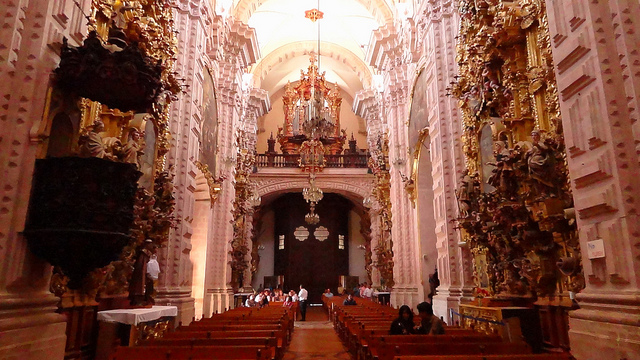
According to the Gospels of Matthew and Mark, respectively, both of the thieves mocked Jesus Luke, however, relates:ģ9 Now one of the criminals hanging there reviled Jesus, saying, "Are you not the Messiah? Save yourself and us."Ĥ0 The other, however, rebuking him, said in reply, "Have you no fear of God, for you are subject to the same condemnation?Ĥ1 And indeed, we have been condemned justly, for the sentence we received corresponds to our crimes, but this man has done nothing criminal."Ĥ2 Then he said, "Jesus, remember me, when you come into your kingdom."Ĥ3 He replied to him, "Amen, I say to you, today you will be with me in Paradise." Īttempts have been made to reconcile the apparent contradiction between Luke's account and that of Mark and Matthew. Two men were crucified at the same time as Jesus, one on his right and one on his left, which the Gospel of Mark interprets as fulfillment of the prophecy of Isaiah 53:12 ("And he was numbered with the transgressors"). The Russian Orthodox icon of The Good Thief in Paradise, circa 16th century in Rostov, Kremlin In Russian Orthodox tradition, he is named Rakh ( Russian: Рах).In the Arabic Infancy Gospel, he is named Titus.In the Codex Colbertinus, he is named Zoatham or Zoathan.In Coptic Orthodox tradition and the Narrative of Joseph of Arimathea, he is named Demas.Other traditions have bestowed other names: He is given the name Dismas in the Gospel of Nicodemus and is traditionally known in Catholicism as Saint Dismas (sometimes Dysmas in Spanish and Portuguese, Dimas). The Roman Martyrology places his commemoration on 25 March, together with the Feast of the Annunciation, because of the ancient Christian tradition that Christ (and the penitent thief) were crucified and died exactly on the anniversary of Christ's incarnation. He is officially venerated in the Catholic Church. The other, as the impenitent thief, challenges Jesus to save himself and both of them to prove that he is the Messiah. The Gospel of Luke describes him asking Jesus to "remember him" when Jesus comes into his kingdom. The Penitent Thief, also known as the Good Thief, Wise Thief, Grateful Thief or the Thief on the Cross, is one of two unnamed thieves in Luke's account of the crucifixion of Jesus in the New Testament. Dimas’ namesake street in SMA leads uphill to the Chapel of Calvary, named for the hill he, and the other two guys, were crucified on.Wearing a loincloth and either holding his cross or being crucified sometimes depicted in Paradise. Today, due to security, only a priest and one other person are allowed into the prison to visit this day. Then church members, friends and family of the prisoners would bring the image of Jesus behind bars and food to the prison. the clergy from Santa Escuela (the church next to the Parroquia) prepared food especially for the prisoners in San Miguel’s jail.

The Tuesday before Holy Week is dedicated to prisoners, remembering when Dimas and Jesus were in prison awaiting Crucifixion. Dimas is the patron of prisoners (particularly the condemned). Dimas’ feast day falls in, or around, Holy Week on March 25th. Since Easter’s date changes yearly according to the lunar cycle, St. Dimas, there is much comfort for the living in the early stages of mourning. Had cancer not unexpectedly hastened his death, he could’ve, would’ve, been baptized. So how does an unbaptized lad go straight to Paradise? Through the power of baptism by intent, or that if he could have, he would have.ĭimas’ baptism by intent is how my Jewish brother-in-law received a Catholic funeral and burial. Namely there is zero indication Dimas was baptized, or even Christian. This guaranteed sainthood opens up a Pandora’s box of philosophical issues. The side towards Dimas points up (indicating his ascent to Heaven) while Gestas’ side points down for, well, you know. In case you are confused which is Dimas and which is Gestas simply look at the foot pad beneath Jesus’ toes. Dimas is the only person confirmed, by Christ himself, to be a saint. In return Jesus promises to see him in Heaven making Dimas the first saint. Actually his name comes from the Greek for sunset, or death.ĭimas is the good (or penitent) thief that is nice to Jesus. In Spanish he is Dimas, which sounds very much like “Tell me more”.


In English his name is Dismas which sounds, unfortunately, much like dismiss. Legend has it the more unattractive Gestases in town were modeled after a local butcher. He’s easy to spot in sculptures here in San Miguel de Allende as the lad with a scary face. One is Gestas, the bad thief who poked fun at Jesus. Throughout Holy Week you’ll see Jesus crucified alongside two other lads with important cameo roles in history. The number one rule of real estate applies in all areas of life and is a reminder it is best to get along with your neighbors.


 0 kommentar(er)
0 kommentar(er)
